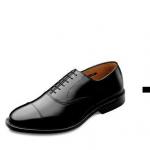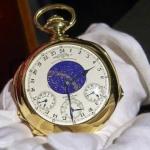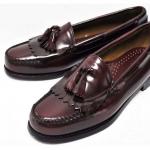Boot cut jeans
Jeans (eng. – jeans) - trousers made of thick cotton fabric, most often dyed in indigo color. Equipped with rivets at the joints of the seams of the pockets. Jeans were invented by Levi Strauss, who first made them as work clothes in 1853.
The history of jeans
According to historians, as far back as the 15th century, Italian sailors wore trousers made of canvas. This fabric spread in clothing due to the decline of the sailing fleet and the uselessness of sewing sails. Later, these pants began to be called "Genes", and then "jeans" - in the American style. These words come from the name of the Italian city of Genoa, where canvas was produced.
In 1750, the "Book of Patterns of the Textile Industry of France" was published, which describes eight types of pants that are very reminiscent of modern jeans.
The history of jeans the way we are used to seeing them now is associated with the name of the Belgian migrant of Jewish origin, the son of a tailor - Leib Strauss, who arrived in America in 1853. 24-year-old Leib was still on the ship, American sailors nicknamed Levi Strauss. Upon arrival in the United States, Levi had with him only a roll of canvas, which he inherited from his father, from which, in order to somehow feed himself, Strauss began to sew tents to order.
 One day, a tipsy gold digger told Levi that if he had good pants, then they could spend the night under a tree, and not in a tent. Without thinking twice, Levi Strauss, remembering the skills passed on to him by his father, sewed his first canvas pants and sold them to a worker. Their price was 1 dollar and 20 cents.
One day, a tipsy gold digger told Levi that if he had good pants, then they could spend the night under a tree, and not in a tent. Without thinking twice, Levi Strauss, remembering the skills passed on to him by his father, sewed his first canvas pants and sold them to a worker. Their price was 1 dollar and 20 cents.
Canvas pants from Strauss turned out to be really solid, so soon the tailor had other customers.
In the same 1853, Levi Strauss opened his first atelier in San Francisco, on Battery Street, where he was engaged in sewing trousers for workers. Strauss himself traveled to the settlements of gold miners, offering his products and gradually improving them in accordance with the wishes of customers. So the pants got belt loops, strong double stitching, deep front and back pockets.
In 1860, the demand for Levi Strauss products fell sharply. This was due to the fact that the pockets of products quickly came off the weight of gold nuggets and tools that the workers carried with them. So in the history of jeans appeared the name of another person - Jacob Davis. He came up with a special device that allows you to greatly strengthen the pockets of your pants. Jacob attached iron rivets from a horse harness to the joints of the seams on the pockets of the products. Since Jacob himself was not wealthy enough to patent his invention, he did it together with Levi Strauss. So rivets appeared on the fly, front, and then the back pockets of jeans.
 In 1873, Levi Strauss and Jacob Davis received US Patent and Trademark Office patent #139121 for the manufacture of "strapless work overalls with pockets for knife, money and watches".
In 1873, Levi Strauss and Jacob Davis received US Patent and Trademark Office patent #139121 for the manufacture of "strapless work overalls with pockets for knife, money and watches".
A little later, Levi Strauss began to sew jeans not from canvas, but from dense cotton fabric of diagonal weaving - twill, otherwise called "denim".
In 1886, a leather label appeared on jeans. Around the same time, the San Francisco gold mines dried up, meaning there was nothing more for the gold miners to do there. Thus, jeans leaked to the masses, becoming clothing for ordinary people.
In 1926, Lee revolutionized the denim world with the first zip-front jeans, the 1012.
In 1941, the groin riveting disappeared from the jeans, because, according to the workers, it was very hot from the fire and could damage the skin.
During the Second World War, jeans in America were made and sold only for combatants, as a result of which the pants became part of the military uniform of the US Army.
In 1953, the first women's jeans in Europe from the Mustang brand appeared in Germany.
In the 60s of the twentieth century, the fashion for jeans returned to the masses, becoming an attribute of the image of representatives of such subcultures as. A little later, jeans began to be dyed not only in indigo, but also in any other colors. In the late 60s, Louis Ferro introduced to the general public jeans completely embroidered with rhinestones. Since that time, a new era in the history of jeans has begun, which revolutionized the fashion world and became one of the most popular wardrobe items of our time.






Textile
Initially, jeans were sewn from thick Italian or French hemp canvas due to its cheapness. Later, the canvas was replaced by a dense cotton fabric - twill. By the beginning of the 60s of the twentieth century, at the height of the denim boom, all jeans were already sewn only from it.
Twill - (from lat. Sericus - silk) - cotton, silk or artificial fabric with a diagonal weave. This canvas was made around 300 AD. e. in the French city of Nimes. Serge de Nimes - Nimes' twill was destined to go down in history. After 1500 years, jeans began to be sewn from this fabric, and it itself was called "denim", after the name of the city - de Nimes.
Other types of denim:
- shambri- a kind of denim, soft and thin denim;
- broken twill- herringbone denim, invented John Walker and pioneered by Wrangler;
- eykru- undyed cotton fabric, natural denim;
- stretch- fabric made from a mixture of cotton with elastane or lycra;
- gin- another kind of denim, a cheap, uniformly dyed fabric, the threads are intertwined diagonally.

Models (varieties)
Currently, there are a large number of varieties of jeans. They vary in fit and style:
- easy fit classic jeans- fit the hips, the legs are slightly narrowed to the ankle, the waist line is slightly underestimated;
- Comfort fit classic jeans- looser, straight legs, higher waistline;
- five-pocket classic jeans(Five-pockets) - model from Levi's at number 501. Straight on a fairly wide belt with five or nine decorative metal rivets on the front and back pockets. The jeans have 5 pockets: 2 on the back, 2 on the front and a small watch pocket on the back of the right front pocket;
- flared jeans"(Flare cut) - they fit (but do not fit) the leg to the knee or mid-calf and noticeably expand towards the ankle, usually sitting just below the waist;
- Boot cut jeans- elongated, tight-fitting hips, with a low waistline and with trouser legs that expand below the knee, covering the boots by two fingers;
- bell jeans(Bell bottom) - they fit the leg to the knee, and strongly flared from the knee, the style gained popularity in the 70s;
- skinny jeans(Skinny jeans) got their name because of the very tight silhouette, tightly fitting the figure, both in the hips and in the legs;
- Loose fit- very spacious jeans along the entire length, at the bottom they are so wide that they almost completely cover the shoes;
- baggy fit- baggy, extremely wide jeans, with the effect of lowered pants;
- bib- overalls with shoulder straps;
- Cargo- Jeans with voluminous patch pockets;
- Saggy fit- jeans with a hanging codpiece;
- Sta Prest- jeans with an "eternal" arrow, which were released for the first time in the 60s in Knoxville (USA). Polyester is added to their fabric, the trousers are “baked” using a special technology in such a way that even after numerous washes the arrow remains in place.






